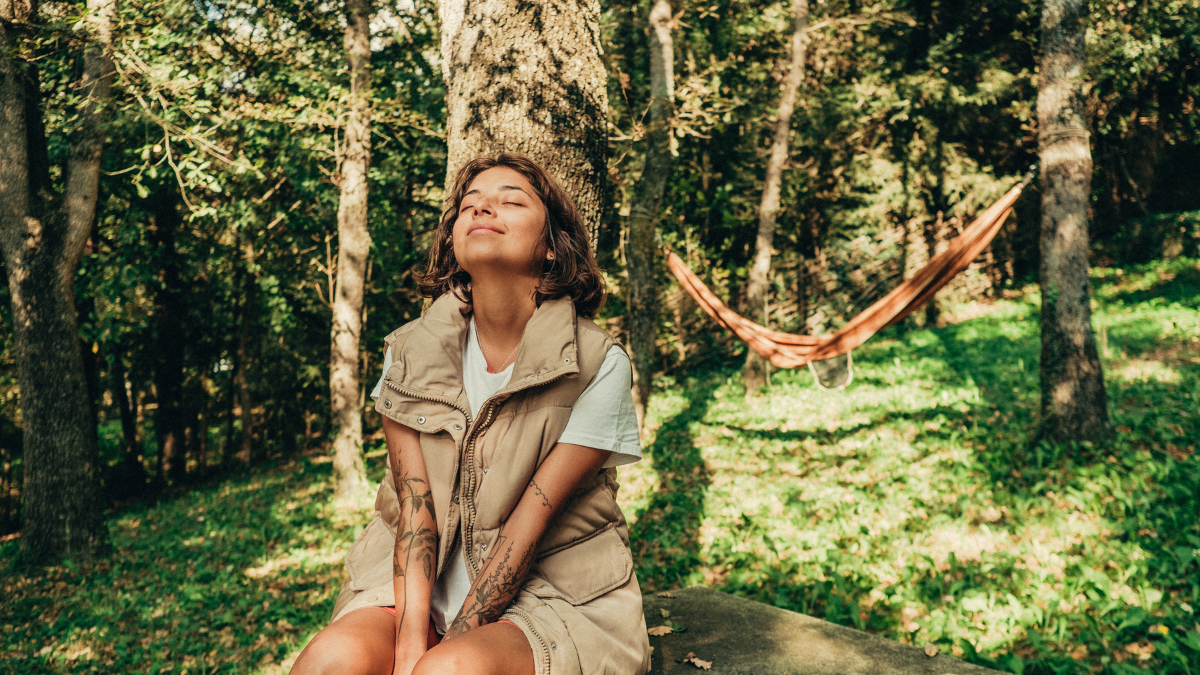There’s a moment, often after weeks of nonstop doing, when your body starts asking for a pause. The signs can be subtle at first, until they swell into a full-body plea for something quieter and slower. That’s when a soft reset can work its quiet magic.
A soft reset isn’t about escaping your life. It’s about slipping into a gentler rhythm, somewhere the air smells like pine, and the loudest sound is a woodpecker in the distance. The city clock fades. Your to-do list loosens its grip. You remember what it feels like to breathe without rushing.
Nature holds that kind of space better than anything else. It’s unhurried and asks nothing of you except to be present. Whether you’re beside a mountain stream, in a forest clearing, or by the window of a tiny cabin with your coffee, the shift begins quietly, and it’s enough to start stitching your spirit back together.
Why Nature Helps
Time outdoors has a way of dissolving the static in your head. Part of it is biological—fresh air, daylight, and open space alter how your body processes stress. Your shoulders drop without you telling them to. Sleep comes easier. The knot in your chest loosens.
But there’s also a deeper pull. In nature, you’re surrounded by things that grow and shift without overthinking themselves. Trees sway without glancing at a clock. Clouds drift without a destination. Watching these rhythms can remind you that life doesn’t have to be a constant sprint.
In these slower surroundings, small joys stand out: the crunch of gravel underfoot, moss holding morning dew, the soft hum of wind through tall grass. Moments like these act as mental bookmarks, holding your place until you’re ready to return to everyday life, steadier than before.
Choosing Your Retreat Space
Where you spend your soft reset shapes the whole experience. Some find calm in the hush of a mountaintop lodge; others prefer the gentle sway of a hammock by the shore. For a balance of comfort and simplicity, a park model cabin can be an ideal choice, offering the warmth of a traditional cabin in a compact space that’s easy to settle into for a weekend.
Consider the setting that feels most nourishing to you. Do you want to hear waves or a flowing stream? Do you crave the deep quiet of a forest where your only company is birdsong? Your retreat space should feel like an invitation, somewhere you can drop your bags, exhale, and sense the pace shifting.
Whether you end up in the mountains, beside a lake, or in a sunny meadow, the right space becomes part of the healing. It offers shelter, a view worth pausing for, and a doorway into a world that moves at a kinder speed.
Creative and Restorative Activities
Once you’ve arrived, let time stretch without filling it to the brim. A soft reset thrives on a mix of stillness and gentle activity—moments that awaken your senses without draining your energy.
Begin with small rituals: sipping tea on the porch while the air is cool, stretching where sunlight spills through the trees, or jotting down thoughts in a notebook. Keep your plans loose so they can shift with your mood.
Pack a small art kit for nature-inspired creations, pressing flowers, arranging pinecones, or sketching what you see through the cabin window. Even a short walk can be a creative act. Notice textures underfoot, the change in light, or the layers of sound around you. According to research from the American Psychological Association, even brief periods outdoors can ease stress and improve focus, and mindful activities like these make it easier to absorb those benefits.
There’s no need to measure the day by what gets done. Let each small moment, whether it’s cloud-watching or following a winding trail, stand on its own.
Carrying the Reset Home
The beauty of a soft reset is that its effects can follow you home. Recreate some of its simplest pleasures, like a morning tea ritual, a cozy corner with a favorite blanket, or a few minutes of quiet before the day begins.
Keep a list of small, joy-filled actions from your trip. Maybe it’s stepping outside to watch the sky change or leaving a kind note for someone to find. Turning these moments into habits can be easier when you borrow ideas from your travels, like making your getaway trip truly memorable through playful touches and intentional experiences, then weaving those same elements into your everyday life.
Scatter these tiny reminders throughout your routine. They don’t need to be grand gestures, just small cues to slow down and notice what’s good. Over time, those moments can help you maintain a steadier pace, no matter how loud life gets.

